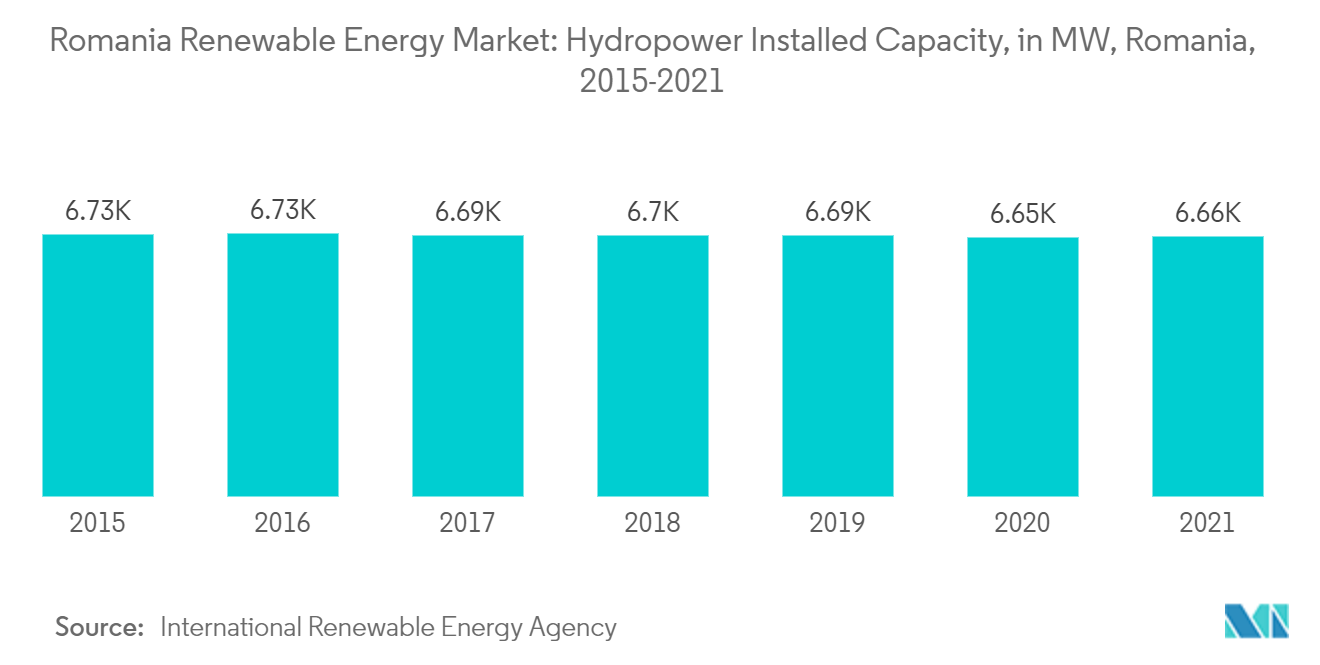Market Trends of Romania Renewable Energy Industry
This section covers the major market trends shaping the Romania Renewable Energy Market according to our research experts:
Ambitious Targets and Supportive Government Policies
- Romania announced numerous policies to support the renewable energy sector, especially solar energy. These policies help meet the obligations set by the European Union (EU) in terms of greenhouse gas emissions through its legislative package.
- In 2021, the total renewable capacity in Romania from renewable sources increased. By the end of 2021, the capacity reached 11,138 megawatts.
- The Government of Romania has set ambitious targets to increase the share of renewable energy in its total electric power mix to 35% by 2030. The supportive government initiatives and targets are likely to be the key drivers for solar energy installations in Romania.
- For instance, the Romanian government offers various incentives for purchasing and installing solar energy. In June 2020, the government approved a memorandum to implement support mechanisms such as the Contract for Difference scheme (CfD) for low-carbon electricity. Under CfD, the producers enter a private contract with the nominated counterparty where the parties agree on a strike price. The producer sells the electricity at market prices. If the market prices are below the strike price, then the counterparty pays the difference to the producer, and if the market price is above the strike price, the producer pays the difference to the counterparty.
- CfD ensures a consistent electricity price to power plant owners, protecting them from market risks associated with electricity price volatility. Given the success of the CfD in the United Kingdom and existing obstacles presented by uncertain electricity prices for the power market, it is expected to be a major market driver.
- Further, the Romanian government has launched an updated regulation for the solar power net metering system to encourage the use of solar energy amid a worsening energy crisis. This initiative is expected to boost the uptake of clean energy in the country, enabling consumers to produce solar electricity and sell it to the national grid.
- Therefore, the abovementioned renewable policies are expected to drive the Romanian renewable energy market in the forecast period.

Hydropower to Dominate the Market
- Romania's energy mix is dominated by hydrocarbon energy sources such as coal, oil, and natural gas. This scenario is changing fast with the growth of hydropower and solar energy.
- Hydropower is the largest source of renewable energy in Romania. Romania has great potential of more than 9 GW, but as of 2021, only 6% of the total hydropower capacity was utilized. Hence, the country has the option to explore more areas to capture hydroelectric power.
- Romania is seeking to derive more of its energy needs from renewable sources. Romania is a fast-growing hydropower market in the Southeast European region.
- According to IRENA's Renewable Energy Statistics 2022, the total capacity of renewable energy sources as of 2021 was 11,138 megawatts (MW). Hydropower accounted for an installed capacity of 6,655 MW.
- As per National Regulatory Authority for Energy Romania statistics 2021, Romania's hydropower accounts for a 33.9% share of the total energy mix in 2020. This is expected to witness significant growth with upcoming projects like 1000 MW of Tarnita - Lapustesti during the forecast period.


